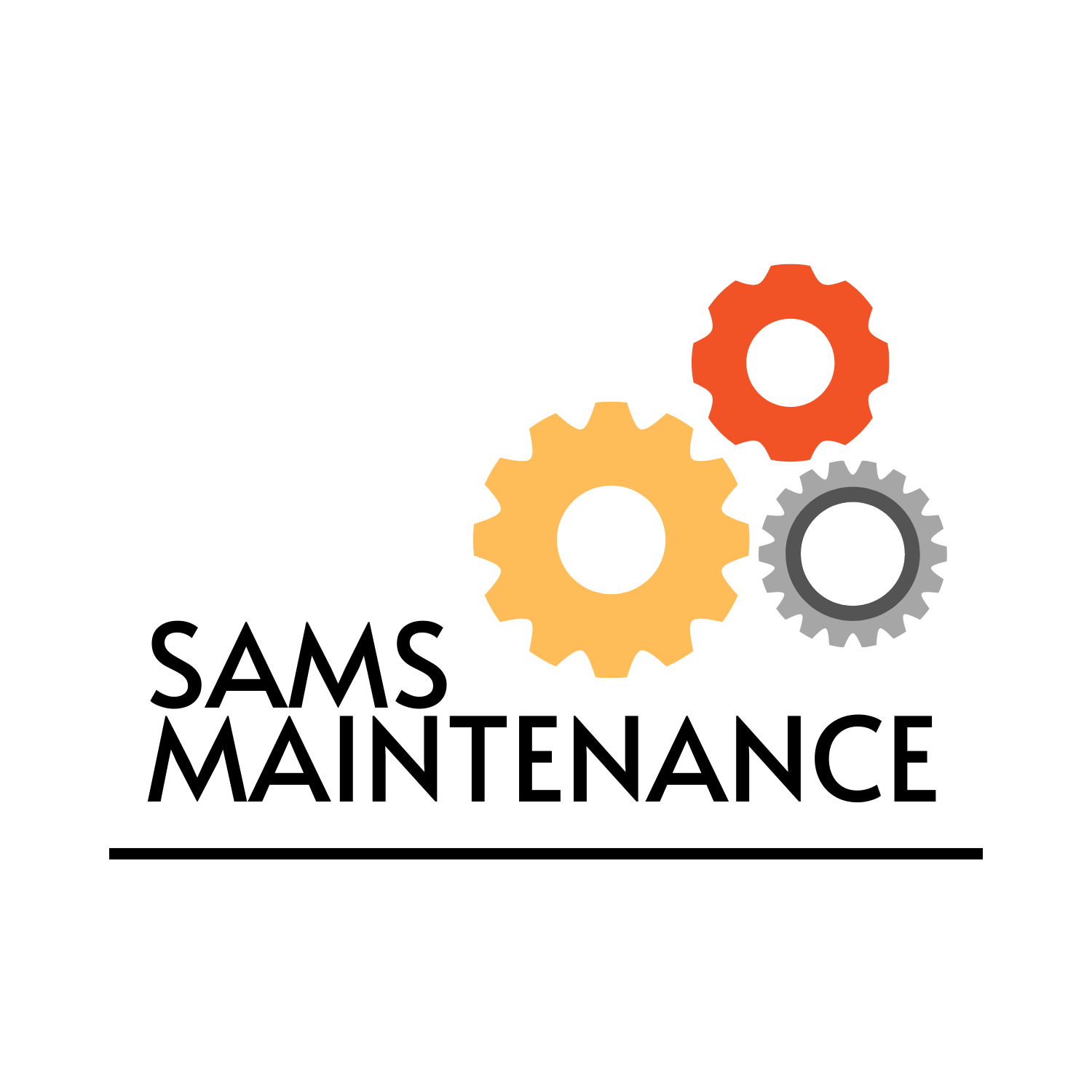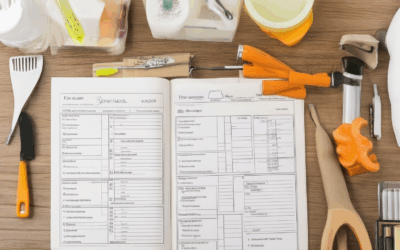Ensuring your home stays in top shape year after year requires a well-organized approach to annual maintenance. With so many responsibilities vying for your attention, it can be easy to overlook crucial tasks that protect your investment and ensure longevity. Whether it’s checking for leaks, inspecting appliances, or preparing for seasonal changes, neglecting these details can lead to costly repairs down the line. This comprehensive annual home maintenance guide provides a detailed checklist tailored to help homeowners maintain their properties effectively, saving time and money in the process. By following this guide, you can address potential issues before they escalate, ensuring your home remains a safe and comfortable place for years to come. From creating a printable checklist to exploring free resources, this guide offers everything you need to stay on top of your home maintenance routine. Keep your property in peak condition with our ultimate annual home maintenance checklist and guide, designed to make homeownership easier and more manageable.
Key Takeaways
- Conduct a Full Exterior Inspection to check siding, windows, roof, gutters, and foundation for issues.
- Check Interior for Peeling Paint and Water Damage to ensure walls and ceilings are in good condition.
- Test HVAC Systems and Major Appliances to ensure they’re functioning properly.
- Inspect Plumbing for Leaks and Water Pressure Issues to maintain water efficiency and safety.
- Ensure Electrical Systems are Safe by testing outlets, circuit breakers, and smoke detectors.
- Prepare for Fire Emergencies by checking fire extinguishers and escape routes.
- Maintain Landscaping and Outdoor Areas through trimming, edging, and repairing lawns.
- Document Everything for Future Reference with photos and records of maintenance tasks.
- Make Seasonal Adjustments to winterize pipes, adjust HVAC settings, and service equipment.
- Hire Professionals for Specialized Inspections to address chimney, HVAC, and plumbing needs.
- Stay Prepared for Emergencies by stocking emergency kits and knowing contact information.
- Check for Standing Water to prevent pest attraction and potential damage.
- Organize Storage Spaces efficiently to keep attics and basements clutter-free.
- Test Sprinkler Systems to ensure proper functionality during watering seasons.
These key takeaways encapsulate the essential steps for maintaining a home, ensuring safety, efficiency, and longevity.

What Should Be Included in an Annual Home Maintenance Guide
To keep your home in optimal condition, it’s essential to perform regular maintenance tasks. Here’s a comprehensive guide outlining the key areas to inspect and maintain annually:
- Heating and Cooling Systems : Schedule a professional to inspect and service your HVAC unit. Check ductwork for leaks, clean or replace filters, and test your furnace and air conditioner.
- Roof Inspection : Look for missing shingles, curled edges, or damage caused by weather. Clean debris from gutters and check for leaks around flashing.
- Water Management : Examine pipes, windows, and the foundation for signs of leaks. Clean gutters to prevent water buildup and potential damage.
- Appliance Check-Up : Test appliances like your refrigerator, oven, and dishwasher. Replace outdated models and clean coils to ensure efficiency.
- Electrical System : Inspect outlets, switches, and wiring. Test Ground Fault Circuit Interrupters (GFCIs) and check for tripped breakers.
- Plumbing Inspection : Look under sinks for leaky pipes and check for rust or corrosion. Inspect underground pipes and adjust water pressure as needed.
- Fire Safety : Test smoke detectors and carbon monoxide detectors. Ensure fire extinguishers are fully charged and accessible.
- Flooring and Walls : Check for cracks, peeling paint, or uneven tiles. Replace old flooring and repaint walls to maintain a fresh look.
- Exterior Siding : Inspect for rotting wood or loose panels. Replace damaged sections to prevent water infiltration.
- Landscape Maintenance : Clear debris, prune trees, and trim shrubs. Adjust sprinklers and ensure efficient irrigation to conserve water.
- Window and Door Checks : Verify that windows and doors seal properly. Replace warped frames or broken glass to enhance energy efficiency and security.
- Attic and Basement Inspections : Look for pests, moisture, or structural issues. Clean and seal the space to protect against mold and mildew.
- Organizational Tips : Declutter and organize storage spaces to make maintenance easier and improve overall home functionality.
Essential Home Maintenance Tasks Every Homeowner Should Include
Keeping your home in great shape requires consistent effort. Here’s a detailed checklist to guide you through annual maintenance:
- Exterior Inspection
- Inspect siding for peeling paint and damage.
- Check windows for cracks or drafts.
- Examine the roof for missing shingles or wear.
- Clean and check gutters and downspouts for clogs.
- Inspect the foundation for cracks or shifts.
- Interior Check-Up
- Look for peeling paint on walls and ceilings.
- Test floors for warping or uneven surfaces.
- Inspect doors and windows for proper sealing.
- Check for water stains on ceilings or walls.
- Examine under appliances for potential leaks.
- Appliance Functionality
- Test major appliances like HVAC systems and refrigerators.
- Clean and store outdoor appliances like lawnmowers.
- Drain and store garden hoses after use.
- Inspect plumbing for leaks and water pressure issues.
- Flush water heaters and check for pilot lights.
- Electrical Systems
- Test all electrical outlets and switches.
- Check circuit breakers for proper function.
- Inspect fuse boxes and wiring for signs of wear.
- Ensure smoke detectors and carbon monoxide detectors are working.
- Test fire extinguishers and ensure they’re charged.
- Fire Safety Preparation
- Clear escape routes and ensure windows are functional.
- Check fire extinguishers and their expiration dates.
- Test smoke detectors and carbon monoxide detectors.
- Create an emergency communication plan with family members.
- Landscape Maintenance
- Trim trees and bushes to prevent overgrowth.
- Edgemaze walkways and driveways.
- Inspect and repair any damaged lawn areas.
- Check for invasive plants and remove them.
- Clean and store outdoor furniture for the season.
- Attic and Basement Inspections
- Inspect attics for pests, insulation issues, and moisture.
- Check for structural damage in basements.
- Organize and secure stored items.
- Seal any gaps or cracks in the space.
- Water Management
- Check for leaks in pipes and fixtures.
- Inspect sump pumps and irrigation systems.
- Clear clogged drains and gutters.
- Test sprinkler systems for proper functionality.
- Check for standing water that could attract pests.
- Documentation
- Take photos of all systems and areas inspected.
- Keep a record of maintenance tasks and schedules.
- Store receipts and manuals for future reference.
- Update your home maintenance binder with new findings.
- Seasonal Adjustments
- Winterize pipes and outdoor equipment in colder climates.
- Prepare for hurricane or storm season in coastal areas.
- Adjust heating and cooling systems for seasonal changes.
- Service yard equipment and tools before storage.
- Professional Inspections
- Hire professionals for chimney, HVAC, and plumbing inspections.
- Have trees and shrubs evaluated for health and safety.
- Check for termites and other pests.
- Inspect for radon levels if you haven’t recently.
- Emergency Preparedness
- Stock an emergency kit with essentials like flashlights and first aid supplies.
- Know the contact information for emergency services and professionals.
- Practice evacuation drills with your family.

What Should Be Included in an Annual Home Maintenance Guide
To keep your home in optimal condition, it’s essential to perform regular maintenance tasks. Here’s a comprehensive guide outlining the key areas to inspect and maintain annually:
- Heating and Cooling Systems : Schedule a professional to inspect and service your HVAC unit. Check ductwork for leaks, clean or replace filters, and test your furnace and air conditioner.
- Roof Inspection : Look for missing shingles, curled edges, or damage caused by weather. Clean debris from gutters and check for leaks around flashing.
- Water Management : Examine pipes, windows, and the foundation for signs of leaks. Clean gutters to prevent water buildup and potential damage.
- Appliance Check-Up : Test appliances like your refrigerator, oven, and dishwasher. Replace outdated models and clean coils to ensure efficiency.
- Electrical System : Inspect outlets, switches, and wiring. Test Ground Fault Circuit Interrupters (GFCIs) and check for tripped breakers.
- Plumbing Inspection : Look under sinks for leaky pipes and check for rust or corrosion. Inspect underground pipes and adjust water pressure as needed.
- Fire Safety : Test smoke detectors and carbon monoxide detectors. Ensure fire extinguishers are fully charged and accessible.
- Flooring and Walls : Check for cracks, peeling paint, or uneven tiles. Replace old flooring and repaint walls to maintain a fresh look.
- Exterior Siding : Inspect for rotting wood or loose panels. Replace damaged sections to prevent water infiltration.
- Landscape Maintenance : Clear debris, prune trees, and trim shrubs. Adjust sprinklers and ensure efficient irrigation to conserve water.
- Window and Door Checks : Verify that windows and doors seal properly. Replace warped frames or broken glass to enhance energy efficiency and security.
- Attic and Basement Inspections : Look for pests, moisture, or structural issues. Clean and seal the space to protect against mold and mildew.
- Organizational Tips : Declutter and organize storage spaces to make maintenance easier and improve overall home functionality.

Essential Home Maintenance Tasks Every Homeowner Should Include
Keeping your home in great shape requires consistent effort. Here’s a detailed checklist to guide you through annual maintenance:
- Exterior Inspection
- Inspect siding for peeling paint and damage.
- Check windows for cracks or drafts.
- Examine the roof for missing shingles or wear.
- Clean and check gutters and downspouts for clogs.
- Inspect the foundation for cracks or shifts.
- Interior Check-Up
- Look for peeling paint on walls and ceilings.
- Test floors for warping or uneven surfaces.
- Inspect doors and windows for proper sealing.
- Check for water stains on ceilings or walls.
- Examine under appliances for potential leaks.
- Appliance Functionality
- Test major appliances like HVAC systems and refrigerators.
- Clean and store outdoor appliances like lawnmowers.
- Drain and store garden hoses after use.
- Inspect plumbing for leaks and water pressure issues.
- Flush water heaters and check for pilot lights.
- Electrical Systems
- Test all electrical outlets and switches.
- Check circuit breakers for proper function.
- Inspect fuse boxes and wiring for signs of wear.
- Ensure smoke detectors and carbon monoxide detectors are working.
- Test fire extinguishers and ensure they’re charged.
- Fire Safety Preparation
- Clear escape routes and ensure windows are functional.
- Check fire extinguishers and their expiration dates.
- Test smoke detectors and carbon monoxide detectors.
- Create an emergency communication plan with family members.
- Landscape Maintenance
- Trim trees and bushes to prevent overgrowth.
- Edgemaze walkways and driveways.
- Inspect and repair any damaged lawn areas.
- Check for invasive plants and remove them.
- Clean and store outdoor furniture for the season.
- Attic and Basement Inspections
- Inspect attics for pests, insulation issues, and moisture.
- Check for structural damage in basements.
- Organize and secure stored items.
- Seal any gaps or cracks in the space.
- Water Management
- Check for leaks in pipes and fixtures.
- Inspect sump pumps and irrigation systems.
- Clear clogged drains and gutters.
- Test sprinkler systems for proper functionality.
- Check for standing water that could attract pests.
- Documentation
- Take photos of all systems and areas inspected.
- Keep a record of maintenance tasks and schedules.
- Store receipts and manuals for future reference.
- Update your home maintenance binder with new findings.
- Seasonal Adjustments
- Winterize pipes and outdoor equipment in colder climates.
- Prepare for hurricane or storm season in coastal areas.
- Adjust heating and cooling systems for seasonal changes.
- Service yard equipment and tools before storage.
- Professional Inspections
- Hire professionals for chimney, HVAC, and plumbing inspections.
- Have trees and shrubs evaluated for health and safety.
- Check for termites and other pests.
- Inspect for radon levels if you haven’t recently.
- Emergency Preparedness
- Stock an emergency kit with essentials like flashlights and first aid supplies.
- Know the contact information for emergency services and professionals.
- Practice evacuation drills with your family.
Key Components of an Annual Home Maintenance Guide
The annual home maintenance guide is a crucial tool for homeowners to ensure their property remains in optimal condition. Below are the essential components that should be included in a comprehensive guide:
- Roofing & Exterior
- Inspect for missing or damaged shingles
- Clean gutters and downspouts
- Check for peeling or cracked exterior paint
- Examine siding for signs of wear or damage
- Heating, Ventilation & Air Conditioning (HVAC)
- Schedule a professional HVAC tune-up
- Replace or clean air filters
- Inspect ductwork for leaks or blockages
- Test smoke detectors and carbon monoxide levels
- Plumbing System
- Check for leaky pipes or fixtures
- Clear slow-running drains
- Inspect water heater for rust or corrosion
- Test sump pumps and water softeners
- Electrical System
- Inspect circuit breakers and fuse boxes
- Check for exposed wires or loose connections
- Test GFCI outlets
- Ensure smoke detectors and alarms are functioning
- Appliances
- Service major appliances like refrigerators and dishwashers
- Inspect ranges and ovens for proper function
- Clean vent hoods and exhaust fans
- Check for worn-out belts or hoses
- Yard & Landscaping
- Prune trees and shrubs
- Mow and fertilize lawn
- Inspect for pests or weeds
- Check sprinkler systems
- Windows & Doors
- Clean window screens and tracks
- Inspect for drafts or moisture
- Check door locks and hinges
- Examine weatherstripping
- Budgeting & Record Keeping
- Create a maintenance budget
- Track repair costs and service history
- Plan for future replacements
- Review insurance coverage
- Emergency Preparedness
- Know emergency contact numbers
- Prepare an emergency kit
- Identify potential hazards
- Practice fire escape drills
- Final Tips
- Schedule regular maintenance
- Use a checklist to stay organized
- Consider hiring professionals for specialized tasks
- Regularly review and update the guide
By following these components, homeowners can ensure their homes remain in excellent condition and reduce the risk of unexpected repairs. Proper maintenance not only extends the life of your home but also enhances safety and comfort year-round.

Key Components of an Annual Home Maintenance Guide
Annual home maintenance is crucial for preserving the value and safety of your property. Below are the essential components of a comprehensive home maintenance guide:
- Roofing & Exterior
- Inspect for missing or damaged shingles
- Check for peeling or flaking paint on siding
- Look for signs of wear or rot on wood surfaces
- Ensure gutters and downspouts are clear and functioning properly
- HVAC Systems
- Schedule professional duct cleaning
- Check air filters monthly
- Inspect for leaks or damage in vents and pipes
- Test heating and cooling systems to ensure proper airflow
- Plumbing
- Examine pipes for leaks or corrosion
- Check water pressure and shut-off valves
- Clean out faucet aerators and drains
- Inspect for early signs of slab leaks
- Electrical Systems
- Test GFCI outlets
- Check for exposed wires or loose connections
- Inspect circuit breakers and fuse boxes
- Ensure smoke detectors and alarms are working
- Appliances
- Wash and dry all major appliances
- Check for worn-out belts or hoses
- Inspect appliance exhaust vents
- Test cooking ranges and ovens
- Landscaping & Outdoor Spaces
- Trim trees and bushes
- Mulch flower beds and plants
- Check for dead or diseased trees
- Inspect outdoor lighting and electrical systems
- Interior Systems
- Dust and vacuum regularly
- Check for mold or mildew in bathrooms and basements
- Inspect carpets for stains or wear
- Test window blinds and drapes
- Fire Safety
- Check fire extinguishers
- Inspect chimneys and flues
- Test smoke detectors
- Review emergency exit plans
- Water Management
- Check for water damage around windows and doors
- Inspect foundation for cracks or settling
- Test sump pumps and sprinkler systems
- Clear clogged rain gutters
By following this annual home maintenance guide, you can ensure your home remains in excellent condition, reducing the need for costly repairs and extending the life of your property.
For more detailed instructions and tools, visit our maintenance blog or explore our resources library .




0 Comments